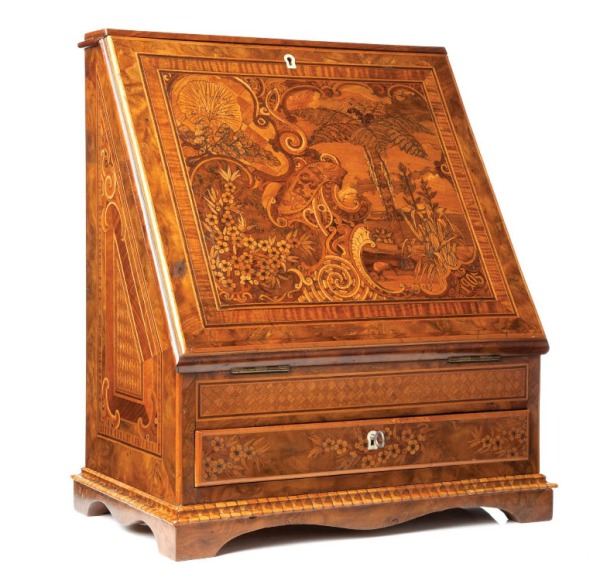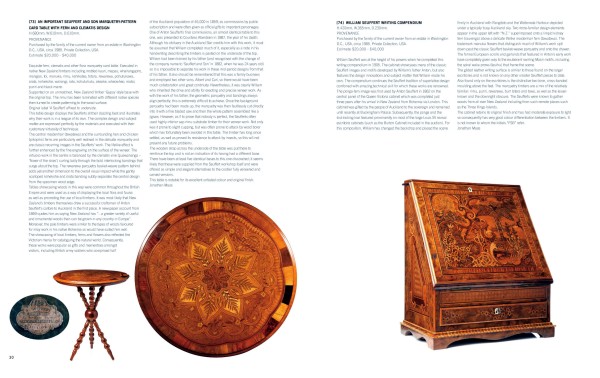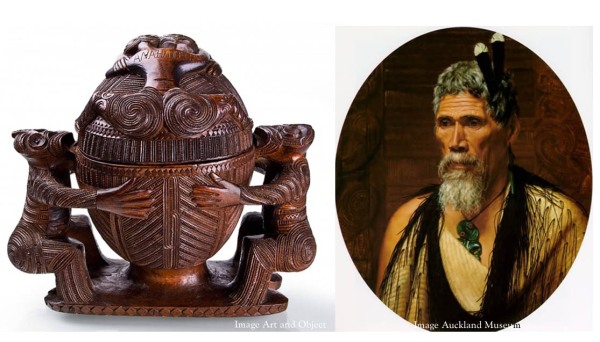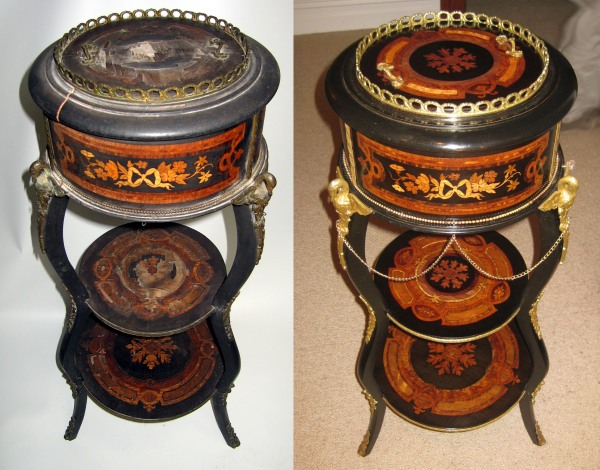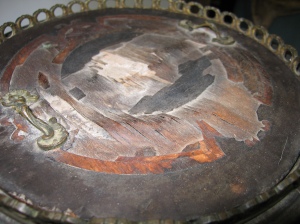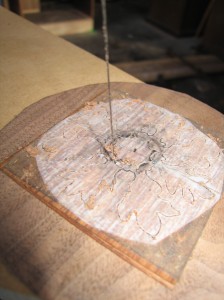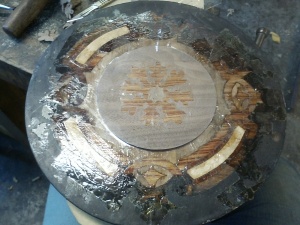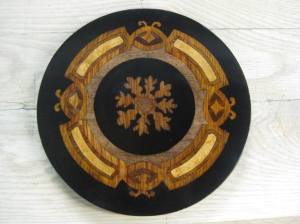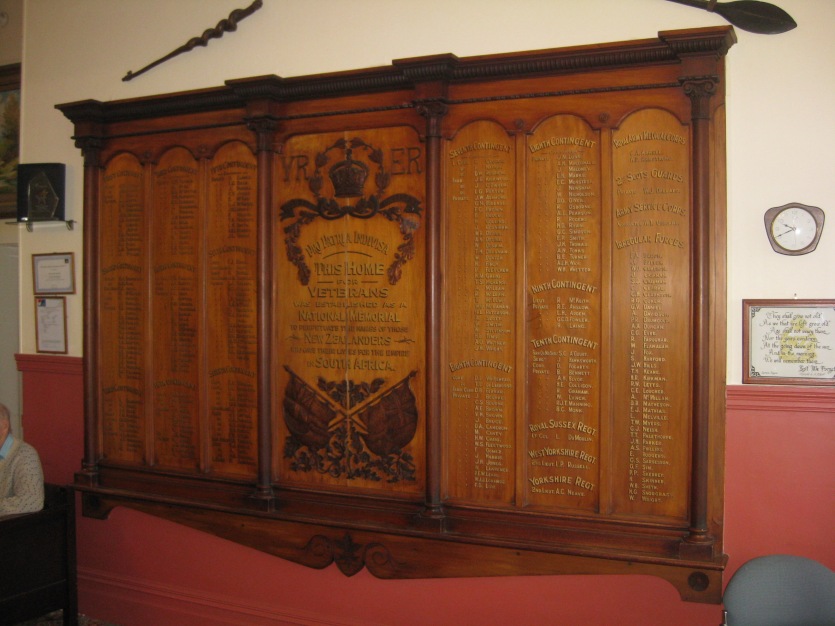
These enormous boards reside in the entrance hall of the Ranfurly Veterans Home and Hospital in Three Kings Auckland and commemorate those men killed in the South African – or “Boer” – War 1899-1902 which was New Zealands first overseas engagement. The Ranfurly Home was established as a National Memorial with the Honour Boards taking pride of place in the lobby so they are the focus of the entire huge wooden building. The boards and frame were generally in good shape but had suffered the usual problems asscociated with wear and tear over a hundred plus years: splits where the timber had shrunk apart, splashes from liquids, cleaning cloths wiped over the lower moulding having removed the finish etc. Worst of all was the wide central panel which had developed a big split right through the gold lettering and the carvings, these had come loose and in a couple of areas pieces had fallen off altogether. Apart from this central panel all the work was relatively straight forward and simply a matter of isolating all the problems and carefully doing what was needed – just on a big scale. The boards and frame were hugely heavy and had been on the wall since they were first put up in 1903 as far as I could tell – even wall paper had been put up around them as well as many layers of paint over the decades.
It was a real privilege to work on such an important and meaningful object. I had been planning to write about these boards for weeks and now, sadly, it is topical as five New Zealand soldiers have tragically been killed in Afghanistan in the last few weeks. One of these soldiers was Rory Malone the son of my friend and colleague Denis Malone with whom I have collaborated on many projects over the years. Denis is the finest traditonal upholsterer I know and extremely good at what he does. Denis and Rory are descended from the legendary Lieutenant-Colonel George Malone who was killed at Chunuk Bair, Gallipolli . Amazingly, in researching this, I have realised that L-C George Malone also captained a force of Taranaki volunteers – in the Boer War. There is another connection to this war that I have come up against in the past couple of weeks as I have been writing about for an upcoming auction catalogue about some pieces by the famous cabinet making firm of Seuffert and Son. The most famous job the William Seuffert (the son of the title) produced was gifted to Lieutenant-General Baden Powell by the people of Auckland after his famous “Relief of Mafeking” during the Boer War in 1900. Like the Ranfurly Home, the Honour Boards the famous “Baden-Powell Desk” was completed in 1903 after three years work prior shipping to England.
See below for further photos
BOOKS – my mini book blog which is actually rather large this time and focuses on the war histories I’ve read this year…
I read a short history of the Boer War while I worked on this piece earlier in the year To fight for the Empire : an illustrated history of New Zealand and the South African war, 1899-1902 by John Crawford with Ellen Ellis. It was a good introduction and I would like to read more. Also on the war front I also completed The End by Ian Kershaw which posed the question: “Why did the Germans keep fighting for so long against such hopeless odds?” It was a bit long but covered the question from all angles and was very nuanced. I read an online interview with the author aftwerwards in which he conceded something he never did in the book that, along with all the other factors, that the Germans never gave up becauseof the fact that they were, well…German and very obedient! You can’t read about WW2 without getting fascianted by Georgi Zhukov so I read a biography of him Marshal Zhukov : the man who beat Hitler by Albert Axell. The book basically sets out to defend Zhukov against attacks by people like Antony Beevor who criticise him for sacrificing Russian soldiers to his ambition – Axells response is that it saved lives in the long run which may be true in some cases but not in others e.g. the botched taking of Seelow Heights prior to the attack on Berlin. Axell also lays into Beevor for the emphasis on the rapes by Russian troops as they occupied Germany and sought revenge. All Hell Let Loose by Max Hastings is a terriffic general history packed with little fascinating details such as the French Vichy pilots itching to shoot down Allied forces in Syria or the man in Lenigrad who woke up to find his wife sawing off his leg – she thought he had died and she needed to eat. There is some good stuff about the famine in India caused by Churchills – arguable but wrong in retrospect – refusal of help to ameliorate it. I have just finished Antony Beevors new book The Second World War. It is good as an overall narrative of the conflict and the origins of the war are brilliantly laid out in the introduction. Like Hastings (he and Beevor are good mates) he covers the Chinese theatre and Pacific theatres which tend to have gotten less attention than the Western theatres in the past. He dwells on the rape in Germany by the Russians as he did in Berlin: The Downfall the book that Axell is responding to above, and constantly reminds everyone that, although the Russian did essentially win WW2, they did it driving American lend lease vehicles! I would be interested to read a Russian historians response. Bernard Freyberg comes off very badly both Crete and Cassino and is described as being tactically stuck in WW1. I got interested in Cassino last year after after reading Alan Whickers account of his war time broadcasting in Italy which was an entertaining read. he also lays into Freyberg and the destruction of the monastery. Maybe Im just being patriotic but it seems to me that if the Italians hadn’t made such a complete hash of their surrender the Germans might not have occupied their country at all, they seem like the worst allies anybody ever had Germans and Allies alike. I would like to read up on this. I got interested in this as my grandfather served in Italy – like Whicker – in broadcasting so got about a bit and had an unusal perspective on things I suspect. This year I read The Story of the Maori Battalion – Wira Gardiner, a great read. I finally read a book on Churchill: Warlord A Life of Winston Churchill at War, 1874-1945 by Carlo D’Este a good overview of his life. Churchill had an incredible life: born in Blenheim Palace, took part in the last cavlry charge at Andaman, served in India, journalist in Cuba, escaped from captivity in South Africa – there is that war again – brought his bath to the Wetern Front in WW1…. the list goes on. I slipped in a book about the War of the Atlantic which I can’t recall the name of , it had some great descriptions of British Naval ofiicers leaping onto scuttled sinking U-Boats to try to snatch Enigma codes.
As if all this wasn’t enough I have have nearly finished a fascinating book Hitler and the Power of Aesthetics by Frederic Spotts which lays out just how obsessed with art, music and opera Hitler really was and how this informed his actions and behaviour. His artistic sensibilities the author suggests explain in large part how he was able to put Germany under his spell – and to create something out of nothing. Hitler regarded himself as an artist and would often bemoan the fact that he had to fight the war and couldn’t wait to retire to his paints! He expended huge sums on the arts (even from his persanal fortune – everyone owned Mein Kampf and he got a royalty on his image on stamps), paid artists and musicians generously and even exempted them from the military. He had a not just a love, but an obsession, with the arts and regarded his fellow Nazi leaders as uncultured swine . The author explicitly rejects the view that Hitler we should treat Hitler as simply a madman and that do do so simply burnishes his mystique – we should not be afraid of him. If you ever have wondered why Hitler was able to become who he was and be so successful for so long this explains it better than any other book I have read. One more thing: after Stalingrad Hitler could not bring himself to listen to Wagner.
Okay enough about books there are a bunch more I haven’t mentioned but on with the restoration
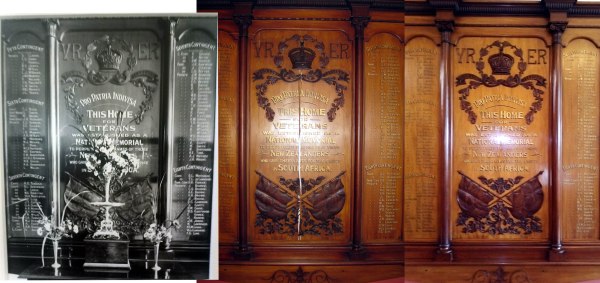
The central panel when new circa 1903 then before and after restoration in 2012 (click to enlarge).

Down – what a mission!
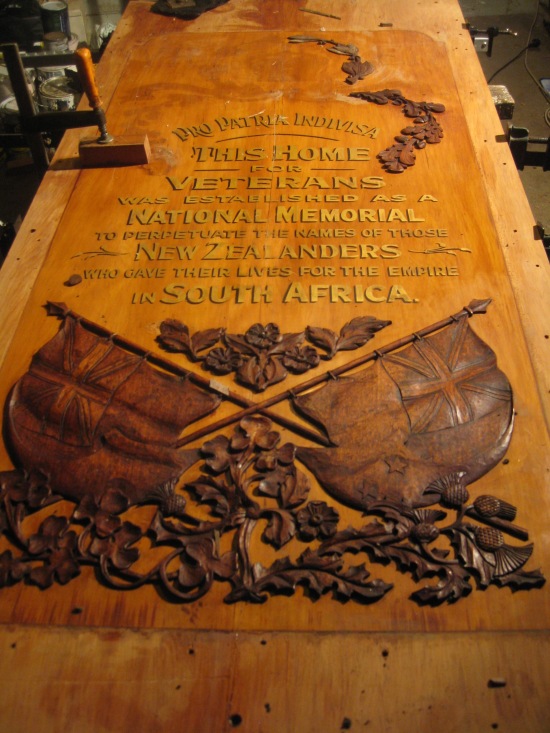
The central panel with the carvings removed and the split repaired.
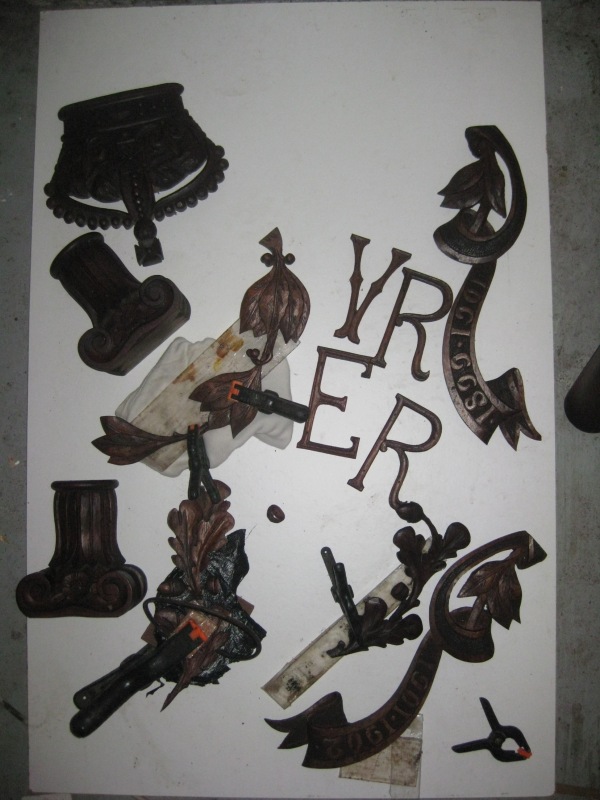
Repairing the carvings.
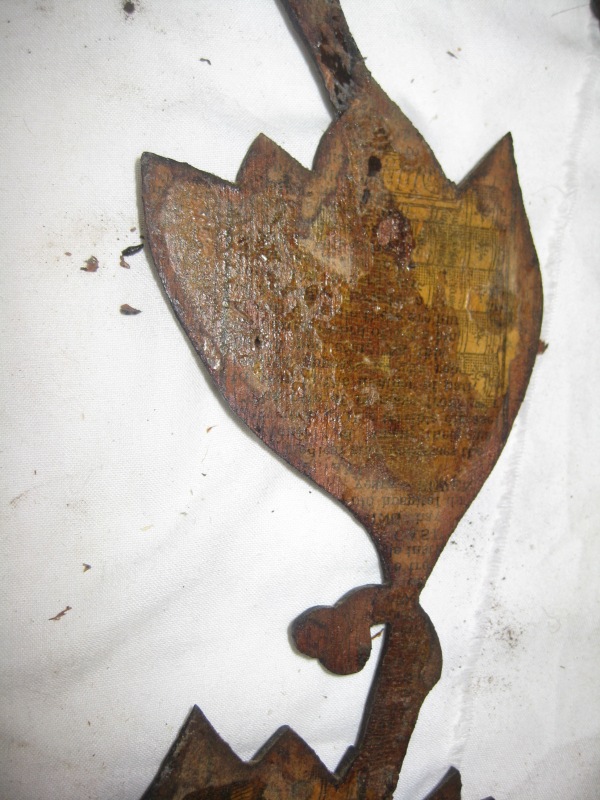
Scraps of newspaper on the backs of the carving used to secure them while they were being carved.
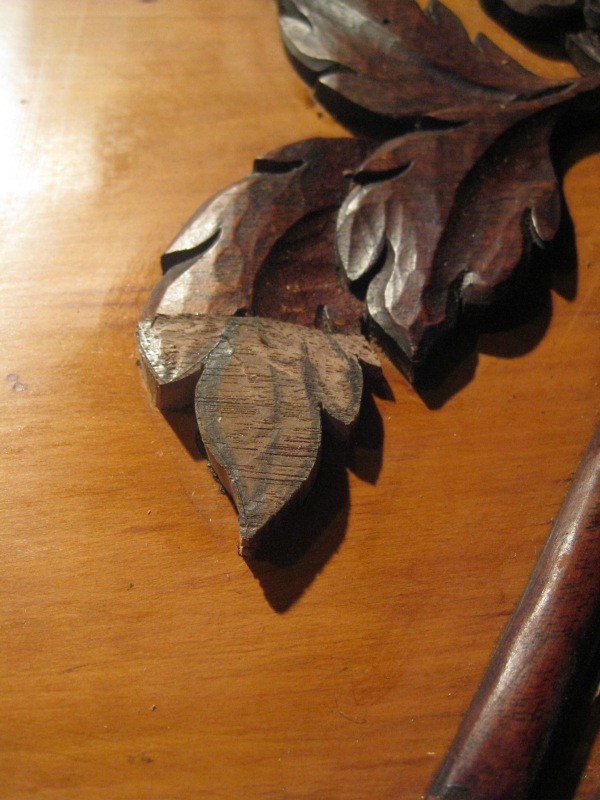
Replacing the missing leaf.
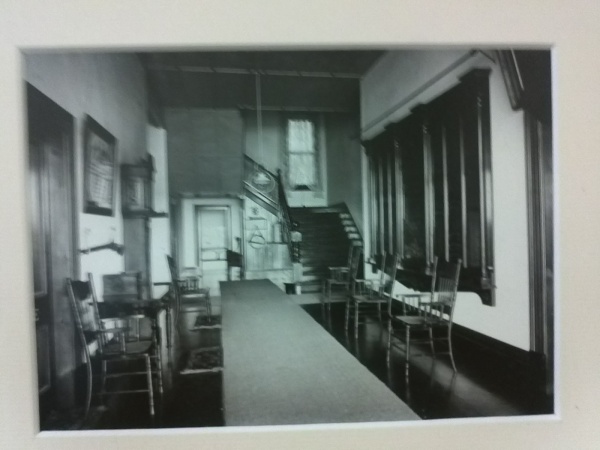
The lobby and boards presumably shortly after opening.
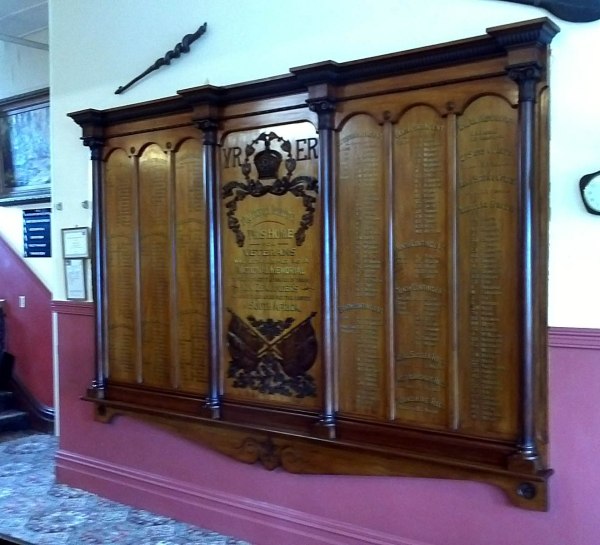
A pretty crummy phone-camera photo of the restored boards back in place.

